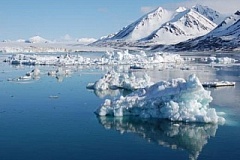TSU was included into the consortium of the leading universities of Russia and Scotland which will be engaged in projects on the restoration of the Arctic systems; experts consider that two Tomsk developments can be used for elimination of oil spills in the Arctic.
It is specified that TSU scientists participated in the international conference which took place in Arkhangelsk and was devoted to the development of network of the British-Russian collaboration in the Arctic research. Experts from several dozens of scientific centers of Russia, Great Britain, Finland, Norway, and the USA became conferees.
- The consortium was formed. The frame of the association was made by scientists of the Biological Institute of TSU, Northern (Arctic) Federal University named after M.V. Lomonosov, Murmansk Marine Biological Institute and University of Aberdeen (Scotland). Tasks in which solution scientists will be engaged are ensuring ecological safety in places of expansion of extraction of hydrocarbons", – it is said in the statement.
It is added that for the solution of environmental problems of the most northern region of the Russian Federation experts suggested to use two inventions of biologists of TSU – technology for cleaning of ground deposits of rivers and lakes from oil and oil products and the aeroprobe – the device for express assessment of a condition of reservoirs regarding pollution by hydrocarbons. Both inventions were presented at the conference.
The technology of cleaning of ground deposits developed at TSU was checked in the Polar region. More than 20 years ago there was the largest accident entered in the Guinness Book of Records. Scientists were engaged in cleaning of one of the most polluted objects – Lake Shchuchye from which bottom they managed to lift more than 150 tons of oil. According to biologists, this technology can work also in a shelf zone.
Earlier it was reported that the aeroprobe was patented in 2016. BI TSU together with the Lukoil Company realized the project on ensuring of ecological safety of water objects of the oil-and-gas regions of the Arctic and the territories adjoining to it by means of the aeroprobe. Also, the technology and the device were brought in the road map on the interaction of PJSC Gazprom with an industrial complex of the Tomsk Region in 2017.

